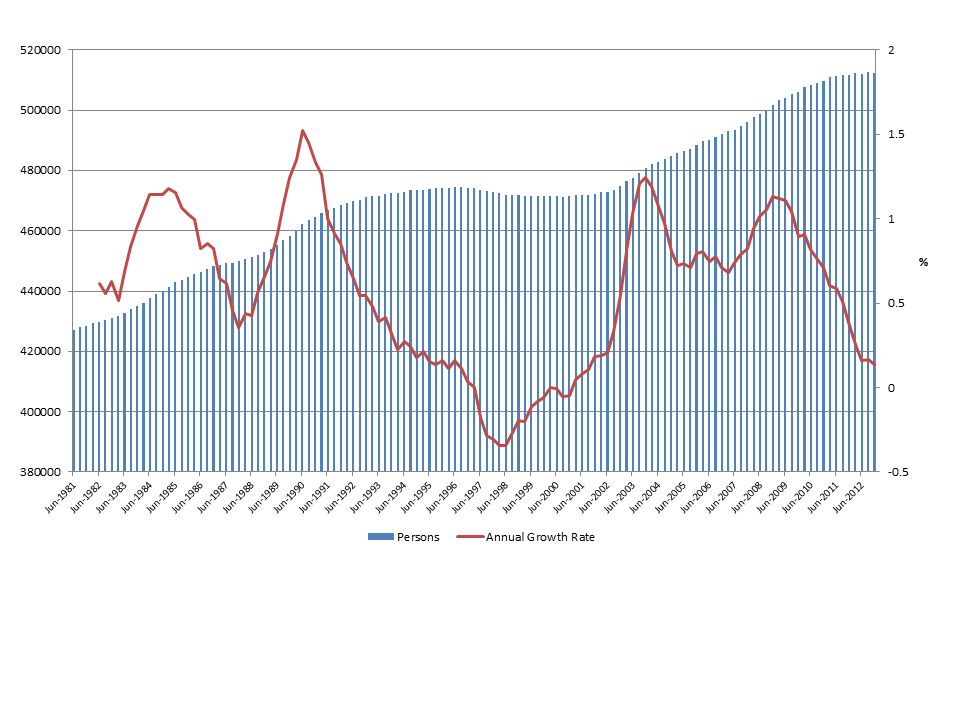It is often easy to get fixated on short term population movements such as Net Interstate Migration (NIM) which is highly influenced by economic performance, yet the structural changes taking place in Tasmania's population warrant a longer term approach.
Population change is influenced by three factors; natural increase (births minus deaths), Net Overseas Migration (NOM) and Net Interstate Migration (NIM). However, it is the complex interaction of all three which influence the composition of Tasmania's population and its potential for growth over the longer term. See the below chart.
NIM is the most volatile of the components and has the greatest impact on the age structure, or composition, of the population. Traditionally, the state experiences net losses in the younger, working, studying and reproducing age groups and net gains in the very young and older ages. The movements are further influenced by the economic conditions at the time.
The measure of NOM was changed by the ABS in 2009 to include all those people who have lived in the State for 12 out of the previous 16 months. Included in the arrivals are long stays (those on business, skilled, family or humanitarian visas) and short stays (those on 457, student or working holiday visas). This measure is helpful from an Estimated Resident Population (ERP) perspective and in planning for and providing appropriate infrastructure and services for the (current) population. However, in undertaking longer term projections and associated planning efforts it is less helpful as it assumes arrivals (and departures) are permanent and assigns them the same demographic assumptions as the resident population (ie fertility rates and life expectancy etc) for future projections.
Historically, natural increase has been positive, however, the rate of increase is declining. This is due to NIM movements, that is the increasing proportion of older people eventually resulting in an increase in the death rate, and the declining number of women in the reproducing age cohort resulting in a decline in the number of births (see my blog post on Tasmania's Vital Index for more information).
Combined, the impact on Tasmania's population means that the propensity for population growth is declining. That is, population growth is projected to continue, but at a diminishing rate.
In order to stabilise the population growth rate, (or more importantly influence the age structure and composition of the population) a more strategic effort beyond relying on a return to strong economic performance and investment attraction is required.


